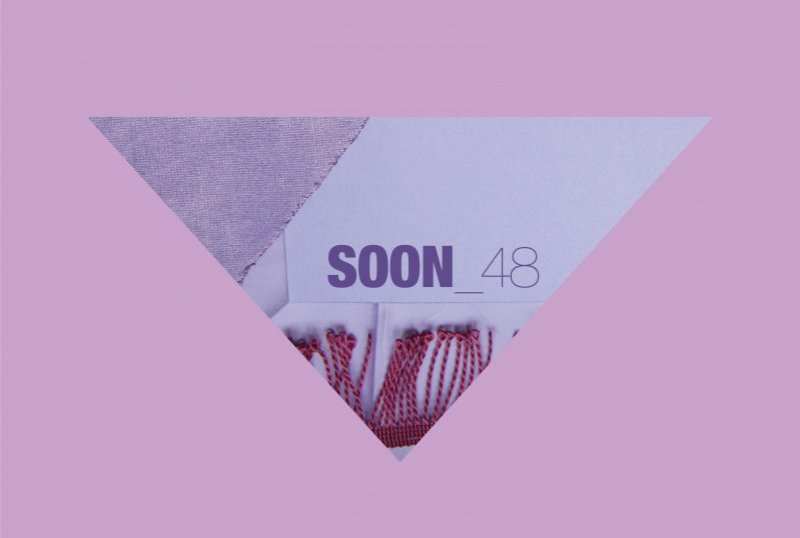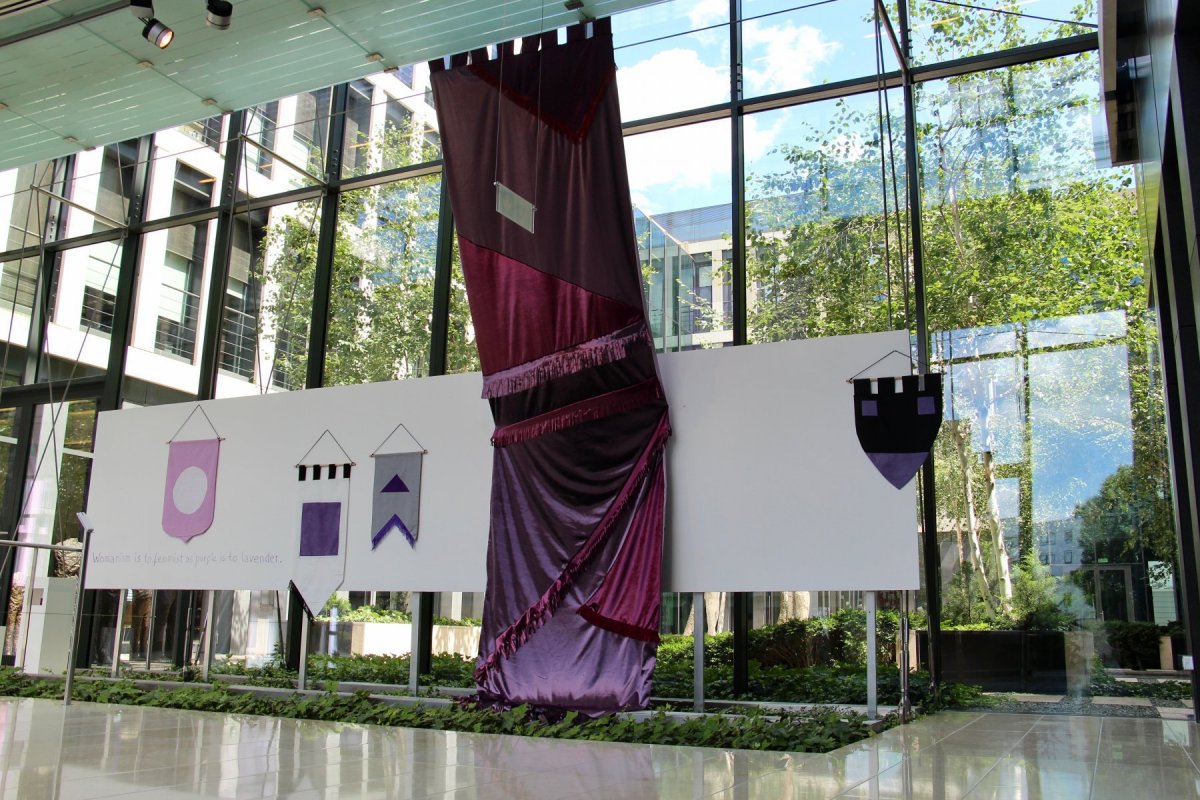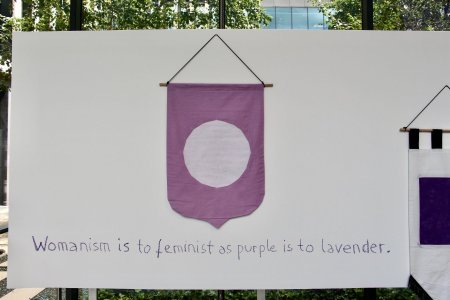In her book titled The Color Purple, Alice Walker introduces the notion of womanism, which focuses on an ideology that deconstructs not only gender-based inequality but also issues related to oppression resulting from the class segregation of the society. Olga Dziubak juxtaposes historical facts and an analysis of shades of purple to create a broken down, abstract form of a banner, which can be referred to the symbols used by the suffragettes in early 20th century. Here, the purple is manifested in the form of a monumental banner. In its physical darkness it becomes stronger in space, just like the excluded groups gain power in the slow emancipation process. It was Isaac Newton that defined the purple as the weakest and darkest colour, which gains power here.
Olga Dziubak – born in 1991; studied at the Academy of Art in Szczecin and at the University of the Arts Poznan. A visual artist who uses the image, performance, sound, text; explores the scopes of meaning for colours based on the analysis of their use by the the society, with the particular attention drawn to the context of history, feminism and the queer theory. Received a scholarship of the Arts Council of Northern Ireland and of the City of Szczecin. Participated in a residency at the AT AL 609 in Campinas, Brazil, in 2018. Worked at the Golden Thread Gallery in Belfast, Northern Ireland in the period 2016–17. Awarded in the 12th Geppert competition.


